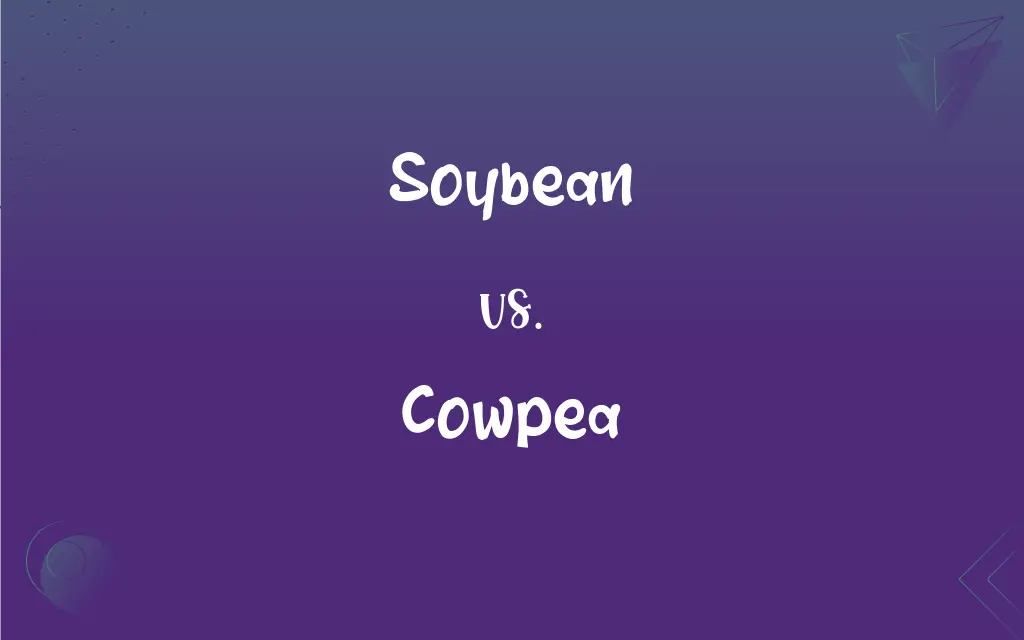Soybean vs. Cowpea: What's the Difference?

Soybean and Cowpea Definitions
Soybean
An annual leguminous plant (Glycine max) native to East Asia, widely cultivated for its seeds, which are used for food, as a source of oil, and as animal feed.
Cowpea
An annual African plant (Vigna unguiculata) in the pea family, widely cultivated in warm regions for food, forage, and soil improvement.
Soybean
A seed of this plant.
Cowpea
An edible seed of this plant. In both senses also called black-eyed pea.
Soybean
A legume plant (Glycine max), commonly cultivated for human and animal consumption and as a nitrogen-fixing ground cover.
ADVERTISEMENT
Cowpea
Any of the plants in the species Vigna unguiculata, including the black-eyed pea.
Soybean
The edible seed of this plant.
Cowpea
The seed of one or more leguminous plants of the genus Dolichos; also, the plant itself. Many varieties are cultivated in the southern part of the United States.
Soybean
An Asiatic leguminous herb (Glycine max, formerly Glycine Soja) the seeds of which (also called soy beans) are used in preparing the sauce called soy. Called also soya bean and soya.
Cowpea
A leguminous plant (Vigna Sinensis, syn. Vigna Catjang) found throughout the tropics of the Old World. It is extensively cultivated in the Southern United States for fodder, and the seed is used as food for man.
ADVERTISEMENT
Soybean
The seeds of the Glycine max, which produce soybean oil; - called also soya bean.
Cowpea
Fruit or seed of the cowpea plant
Soybean
A source of oil; used for forage and soil improvement and as food
Cowpea
Sprawling Old World annual cultivated especially in southern United States for food and forage and green manure
Soybean
Erect bushy hairy annual herb having trifoliate leaves and purple to pink flowers; extensively cultivated for food and forage and soil improvement but especially for its nutritious oil-rich seeds; native to Asia
Cowpea
Eaten fresh as shell beans or dried
Soybean
Most highly proteinaceous vegetable crop known






































































